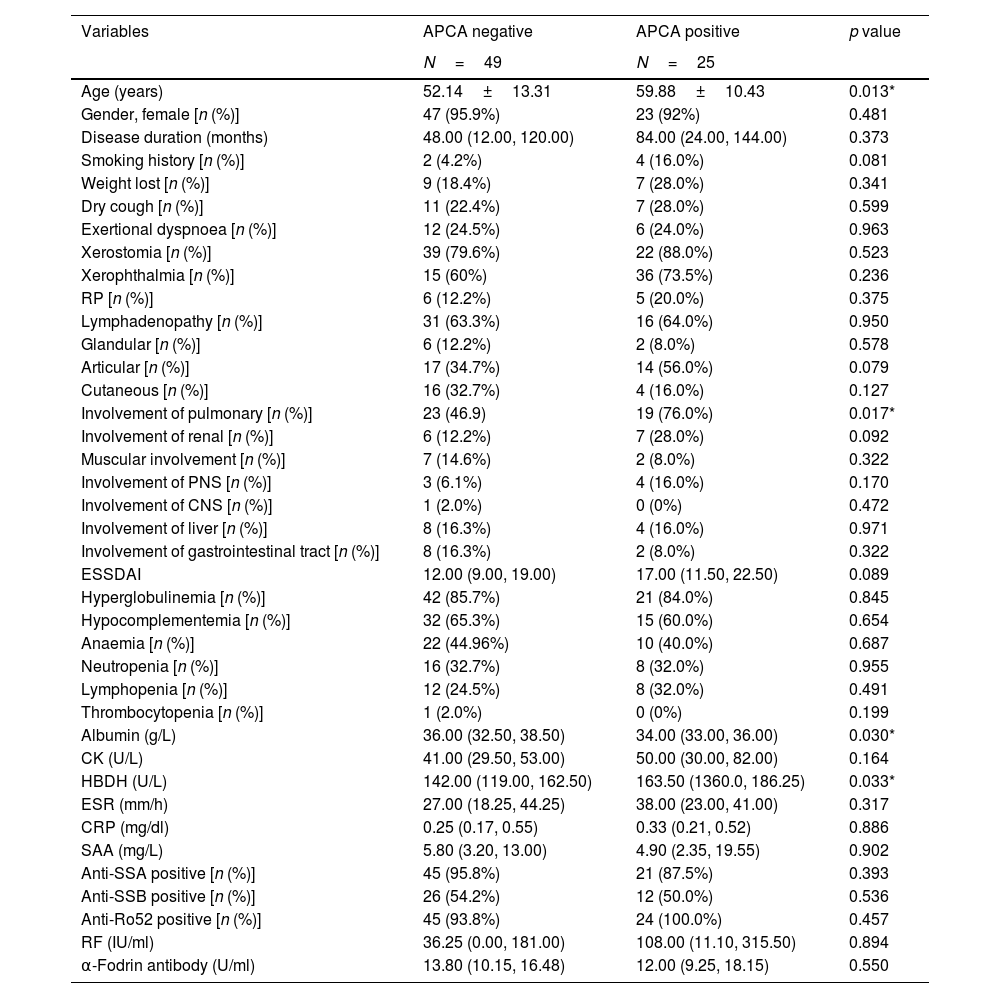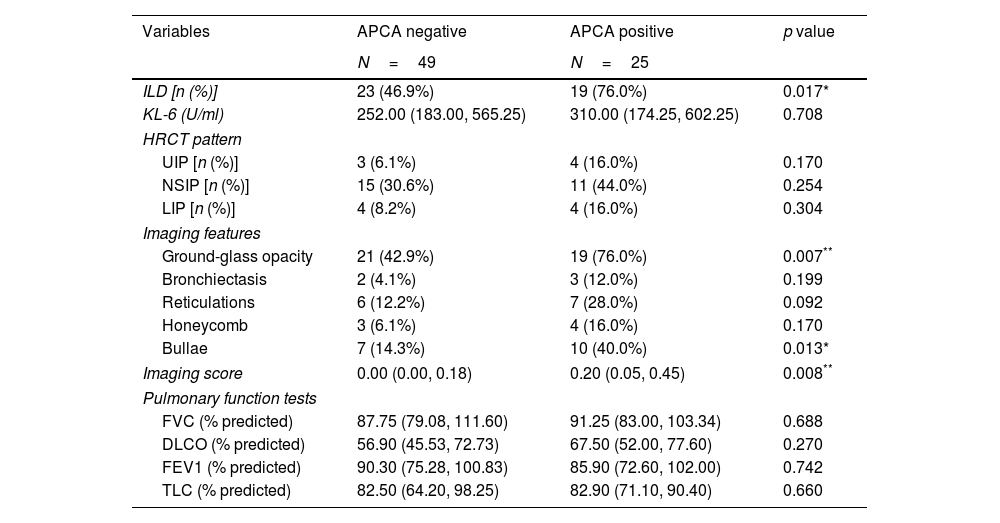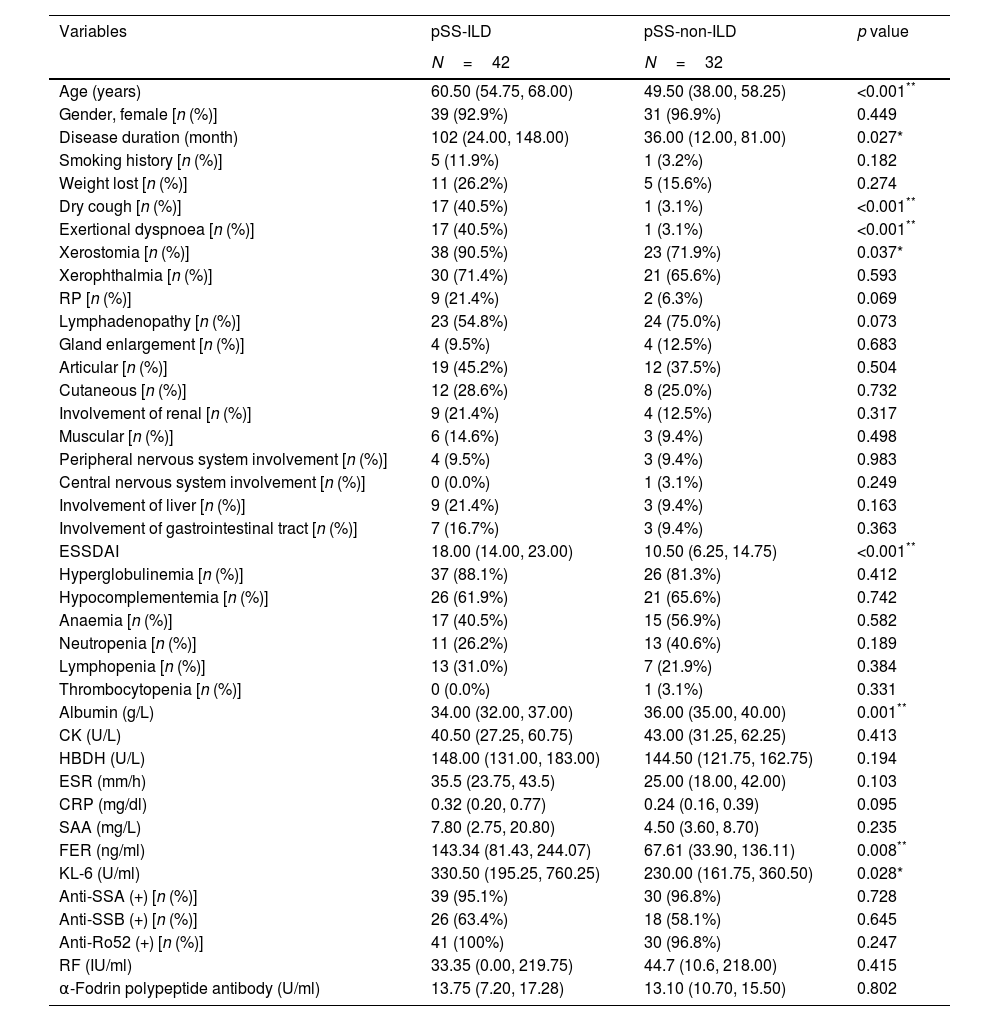ILD is a common manifestation in pSS and is associated with an increased risk of death. APCA are strongly expressed by hyperplastic alveolar epithelial cells in the fibrotic lung and are associated with an accelerated decline in lung function in IPF. In the present study, we aimed to evaluate the clinical utility of APCA in ILD patients with pSS.
MethodsClinical, laboratory, PFTs and imaging data from pSS patients were reviewed, and the ESSDAI was utilized to evaluate disease activity. HRCT semiquantitative scoring was conducted. We compared the clinical characteristics of pSS patients with and without ILD and carried out logistic regression analysis of risk factors for ILD in pSS.
ResultsA total of 74 patients with pSS and 40 HCs were included in the study. ILD was more commonly observed in the APCA-positive group than in the APCA-negative group. The quantitative levels of APCA were positively correlated with the imaging score. Multivariate analysis found that the long disease duration, elevated APCA and elevated KL-6 level were independent risk factors for ILD in pSS patients. The area under ROC curve for APCA was 0.6618, and the threshold concentration was 153.82ng/ml (sensitivity 45.24%, specificity 87.50%).
ConclusionAPCA level is an independent risk factor and might be a potential biomarker for ILD in patients with pSS.
La enfermedad pulmonar intersticial (EPI) es una manifestación común del síndrome de Sjögren primario (SSp) y está relacionada con un mayor riesgo de muerte. Los anticuerpos anticélulas parietales (AACP) están fuertemente expresados por células epiteliales alveolares proliferantes en los pulmones fibróticos y están relacionados con la disminución acelerada de la función pulmonar en la gibrosis pulmonar idiopática. En este estudio, pretendemos evaluar la aplicación clínica de la AACP en pacientes con EPI con SSp.
MétodoSe revisaron los datos clínicos, de laboratorio, de función pulmonar e imágenes de los pacientes con SSp y se utilizó la ESSDAI para evaluar la actividad de la enfermedad en general. Se registraron 5 características principales de imagen pulmonar de la EPI y 2 radiólogos ciegos experimentados realizaron una puntuación semicuantitativa de HRCT de forma independiente. Comparamos las características clínicas de los pacientes con y sin EPI con SSp y realizamos un análisis de regresión logística de los factores de riesgo de EPI en SSp.
ResultadosUn total de 74 pacientes con SSp y 40 controles sanos fueron incluidos en el estudio. La EPI es más común en el grupo positivo de AACP que en el grupo negativo de APCA. El nivel cuantitativo de AACP, está positivamente relacionado con la puntuación de imagen. El análisis multifactorial encontró que la larga duración, el aumento de los niveles de AACP y el aumento de los niveles de KL-6 fueron factores de riesgo independientes para la EPI en pacientes con SSp. El área bajo la curva ROC de AACP es de 0,6618 y la concentración umbral fue de 153,82 ng/ml (sensibilidad 45,24% y especificidad 87,50%).
ConclusionesLos niveles de AACP son un factor de riesgo independiente y pueden ser biomarcadores potenciales de EPI en pacientes con SSp.












